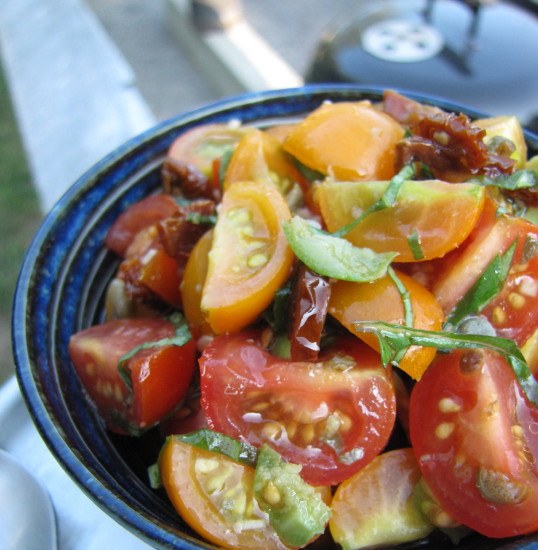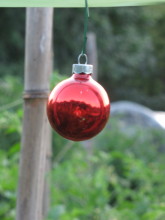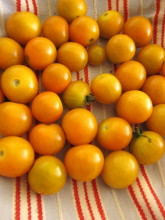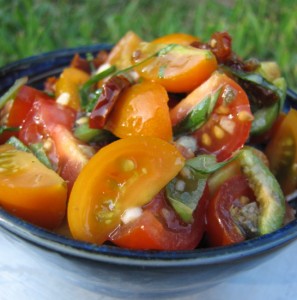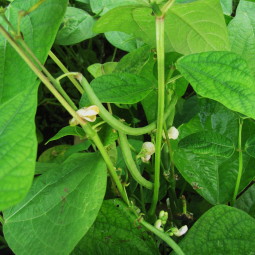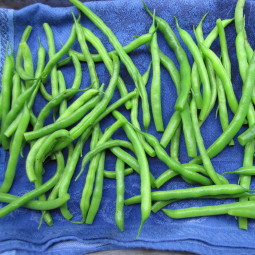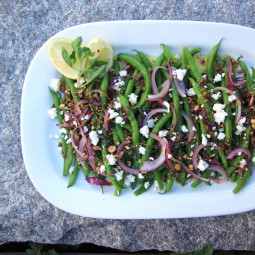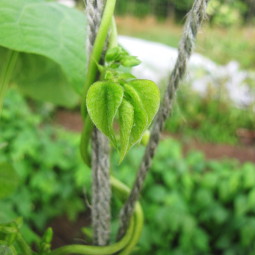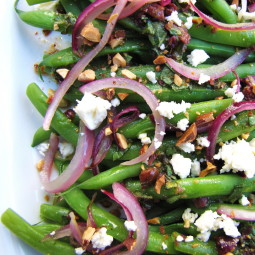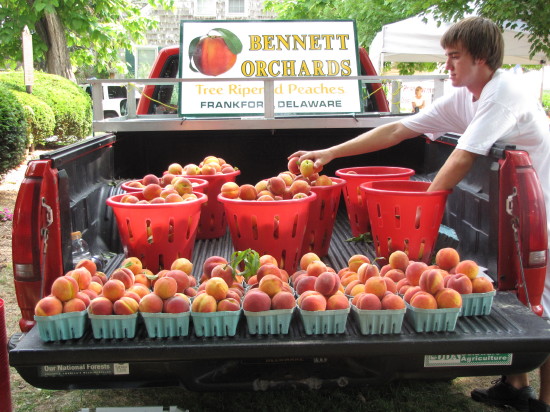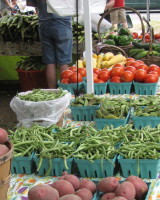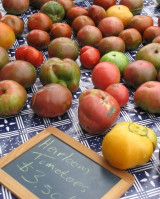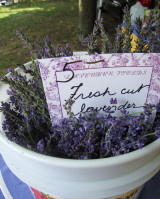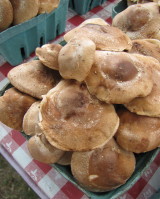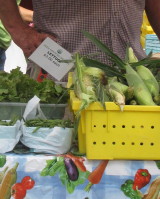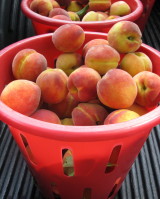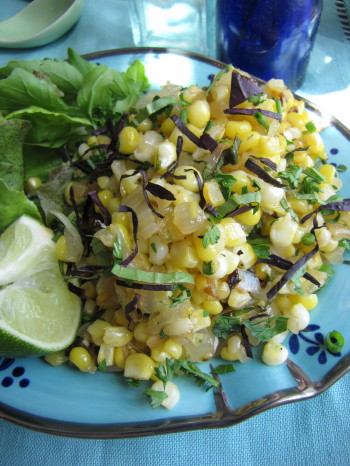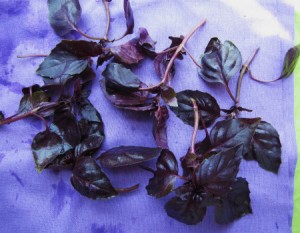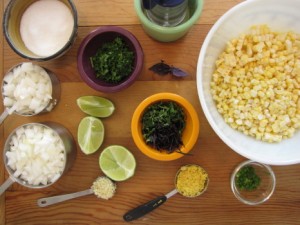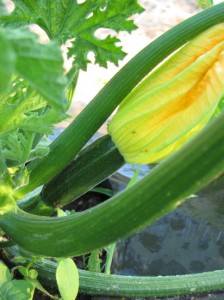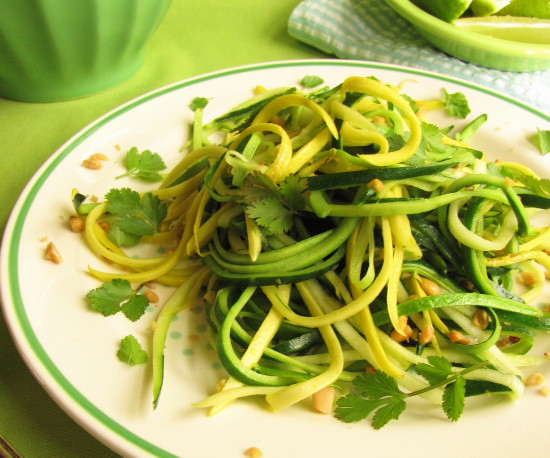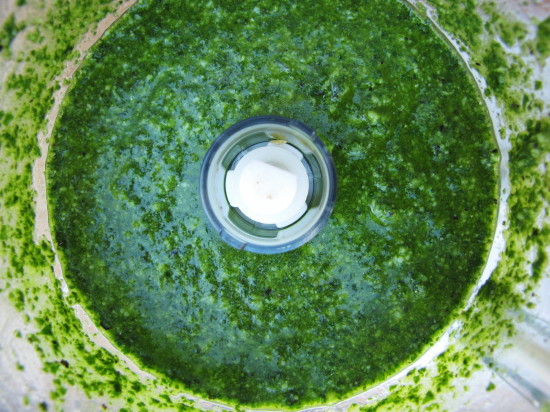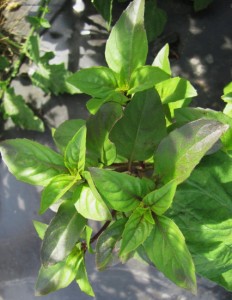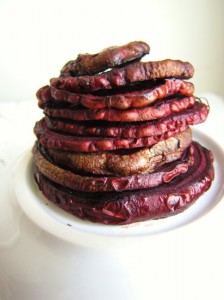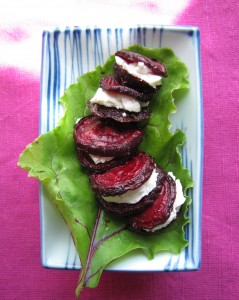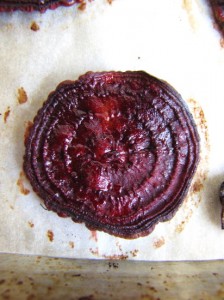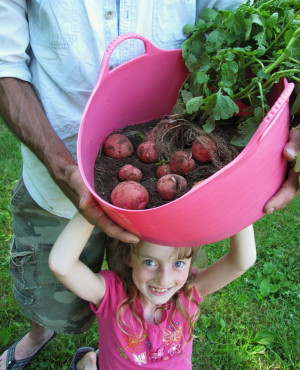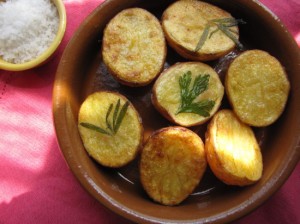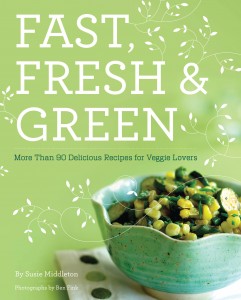 Every morning when I stock the farm stand, I try to predict what will sell—and how much of it. It’s a fun guessing game, but I rarely get it right. Still, I get a tiny thrill of anticipation every evening as I’m walking up to the stand. Will the bean basket be empty? (Usually.) Sungolds all gone? (These days, most definitely yes.) Any herbs sold? (Most days, no. Though every few days, someone comes along and buys four bunches!)
Every morning when I stock the farm stand, I try to predict what will sell—and how much of it. It’s a fun guessing game, but I rarely get it right. Still, I get a tiny thrill of anticipation every evening as I’m walking up to the stand. Will the bean basket be empty? (Usually.) Sungolds all gone? (These days, most definitely yes.) Any herbs sold? (Most days, no. Though every few days, someone comes along and buys four bunches!)
For some reason, the scallions rarely move, and it has taken a few weeks for the limey-green Flavorburst bell peppers to catch on. I understand that. But there’s one thing that really perplexes me: We have the cutest little Pattypan squash, and folks seem to eschew them in favor of the more familiar zucchini. I adore these little vegetables, not just because they’re charming, but because they have a firm texture and make great stir-fry ingredients. (In fact, they hold together much better than diced zucchini.)

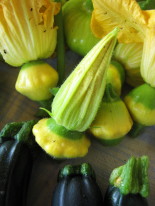
 Because our Pattypans (actually a variety called Sunburst hybrid) are so prolific, we harvest them pretty small (between an inch and a half and two inches wide.) So when I’m ready to cook, I simply quarter them through the axis to get nice diamond-shaped wedges. Or if the squash are a little bigger, I cut them into six or eight wedges instead of four. It’s like cutting a pie if you look from the top. I use my stir-fry pan to cook the wedges over medium-high heat until nicely browned and just tender.
Because our Pattypans (actually a variety called Sunburst hybrid) are so prolific, we harvest them pretty small (between an inch and a half and two inches wide.) So when I’m ready to cook, I simply quarter them through the axis to get nice diamond-shaped wedges. Or if the squash are a little bigger, I cut them into six or eight wedges instead of four. It’s like cutting a pie if you look from the top. I use my stir-fry pan to cook the wedges over medium-high heat until nicely browned and just tender.
I think this how-to-cut-and-cook issue is probably what stops folks from buying the little Pattypans. So I heisted some from the stand this morning, with the specific goal of making a recipe to pass along to both you and our farm stand visitors.
You could certainly put Pattypans in any basic Asian stir-fry, but I opted for a slightly Indian-style approach today, not only because squash goes so well with these flavors, but also because the Pattypan’s firm texture is reminiscent of the kind of vegetable you’d find in a perfect curry. But if you’re not a cumin & coriander fan, you could drop them from this recipe and it would still be delicious. Be sure to include the onion and garlic, though, for the deepest flavor. (You could also try this recipe with regular zucchini. Just choose small, firm, zucchini and cut them into ¾ to 1-inch pieces.)
If you happen to be growing Pattypans or Sunbursts or any other scalloped squash, remember that large ones (4-inches across and bigger) are perfect for stuffing, too. Also, cut into thick slices, they’re lovely grilled and topped with a bit of parmesan or fresh goat cheese. The slices also work well layered in a gratin. And don’t forget roasting—either the wedges or the slices will do well in the high heat of the oven. For summer vegetable soups, add the squash pieces at the very end of cooking so that they don’t lose their great texture.
Pattypan Stir-Fry, Indian-Style
The mustard seeds, with their surprise pop-crunch in the mouth, are a fun addition to this stir-fry. But you can make it without them. I have a really fragrant peppermint growing in a big tub in my garden, so I use it freely. But if you don’t like mint, cilantro is your next best bet here. Or parsley would be just fine.
_____________________________________
1/8 teaspoon ground coriander
kosher salt
1 tablespoon peanut or canola oil
½ medium-small yellow onion, peeled and thinly sliced (about 2 ounces)
9 to 10 ounces small (1- to 2-inches wide) Pattypan or Sunburst squash, quartered if small, or cut into 6 wedges if bigger
½ teaspoon yellow mustard seeds
1 teaspoon fresh lemon juice
½ teaspoon unsalted butter
1 to 2 tablespoons finely sliced fresh mint
___________________________________
In a small bowl, combine the cumin, the coriander, and ¼ teaspoon kosher salt.
In a large nonstick stir-fry pan (or 12-inch nonstick skillet), heat 1 teaspoon of the peanut oil over medium-high heat. When the oil is hot (it will shimmer), add the onion and a pinch of kosher salt, and cook, stirring, until the onion is charry around the edges (brown in patches but still a little firm), about 2 to 3 minutes. Transfer the onion to a plate.
Add another teaspoon of peanut oil and the squash to the pan. Season the squash with another pinch of salt, and cook, stirring occasionally, until the squash is nicely browned on most sides, 6 to 8 minutes. (If the pan seems dry, add the third teaspoon of peanut oil.) Return the onions to the pan, add the garlic, the spice/salt mixture, and the mustard seeds (if using), and cook, stirring constantly, until the garlic and spices are incorporated and fragrant, about 1 minute.
Remove the pan from the stove, sprinkle the lemon juice over it, add the butter, and stir well until the butter has melted. Transfer the vegetables to a serving plate and garnish with the mint.
Serves 2 as a side dish



